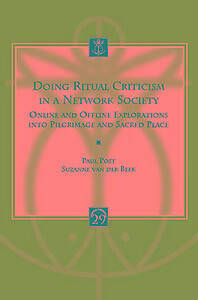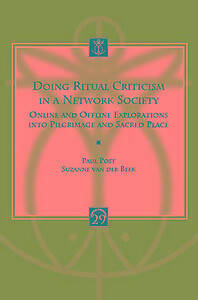
- Afhalen na 1 uur in een winkel met voorraad
- Gratis thuislevering in België vanaf € 30
- Ruim aanbod met 7 miljoen producten
- Afhalen na 1 uur in een winkel met voorraad
- Gratis thuislevering in België vanaf € 30
- Ruim aanbod met 7 miljoen producten
Zoeken
Doing Ritual Criticism in a Network Society
Online and Offline Explorations Into Pilgrimage and Sacred Place
P Post, S Van Der Beek
€ 112,95
+ 225 punten
Omschrijving
Ritual criticism has a major role to play in the rise of innovations, such as those in technology. The advent of media like radio and television sparked fierce debates on religious rituals engaged in via these media. Were ritual activities not necessarily characterized by a physical (real) and locative dimension? And what about the community that is literally a constituting part of a ritual? We see the same questions emerging in the enormous spread of new network media and the impact of digitization on our culture. Can there be such a thing as online rituals? These questions equally apply to the phenomenon of pilgrimage. Is there such a thing as cyberpilgrimage? If so, what forms do these pilgrimages take? The criticism revolves around a range of fixed themes: the physical dimension of ritual, virtuality and reality, distance and engagement, individual and community, private and public, authenticity and authority. This book explores these questions and themes in chapters on the topos of the Pilgrim and the Tourist, cyberpilgrimage as phenomenon and object of research, E-religion and E-ritual, the tradition of mental or virtual pilgrimage, reproduction of sacred space, and the topography of the sacred.
Specificaties
Betrokkenen
- Auteur(s):
- Uitgeverij:
Inhoud
- Aantal bladzijden:
- 150
- Taal:
- Engels
- Reeks:
- Reeksnummer:
- nr. 29
Eigenschappen
- Productcode (EAN):
- 9789042933125
- Verschijningsdatum:
- 30/03/2016
- Uitvoering:
- Paperback
- Formaat:
- Trade paperback (VS)
- Afmetingen:
- 152 mm x 229 mm
- Gewicht:
- 340 g

Alleen bij Standaard Boekhandel
+ 225 punten op je klantenkaart van Standaard Boekhandel
Beoordelingen
We publiceren alleen reviews die voldoen aan de voorwaarden voor reviews. Bekijk onze voorwaarden voor reviews.








